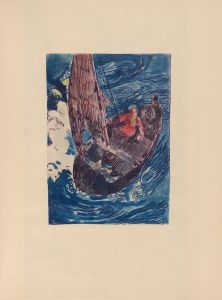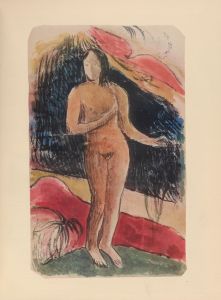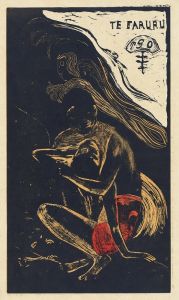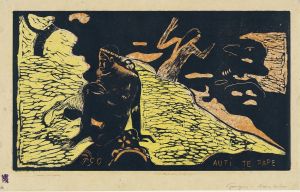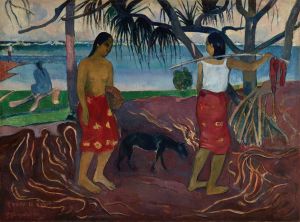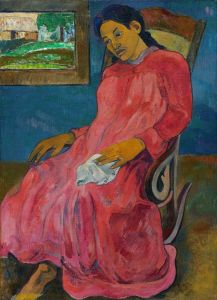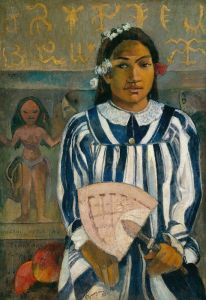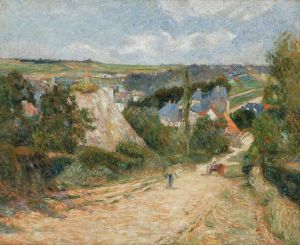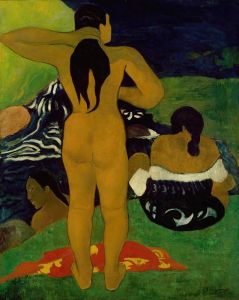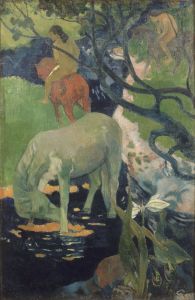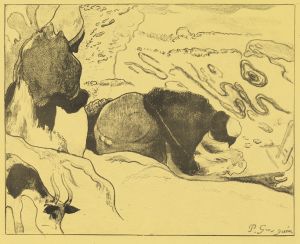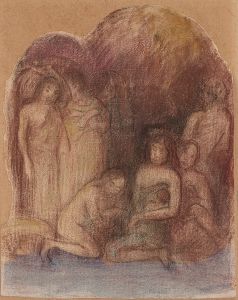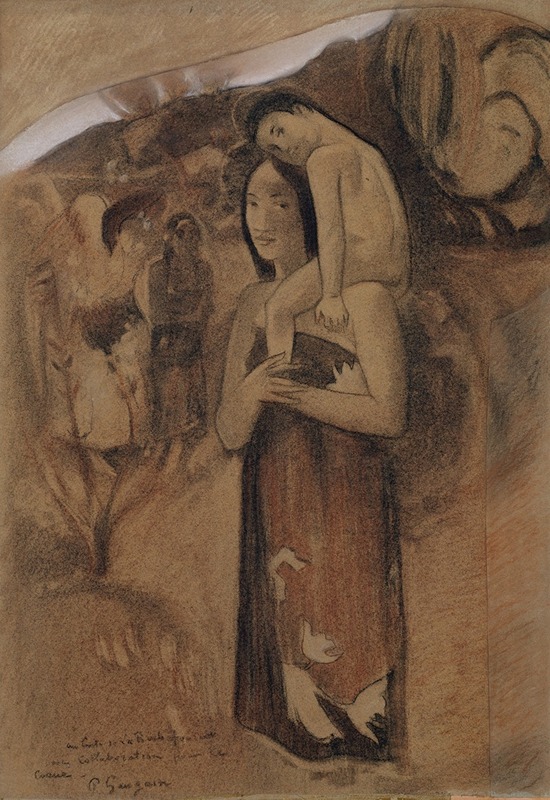
Hail Mary
A hand-painted replica of Paul Gauguin’s masterpiece Hail Mary, meticulously crafted by professional artists to capture the true essence of the original. Each piece is created with museum-quality canvas and rare mineral pigments, carefully painted by experienced artists with delicate brushstrokes and rich, layered colors to perfectly recreate the texture of the original artwork. Unlike machine-printed reproductions, this hand-painted version brings the painting to life, infused with the artist’s emotions and skill in every stroke. Whether for personal collection or home decoration, it instantly elevates the artistic atmosphere of any space.
Paul Gauguin's painting "Hail Mary" (French: "Ia Orana Maria") is a notable work created in 1891 during the artist's first visit to Tahiti. This painting is a significant example of Gauguin's post-impressionist style and his interest in incorporating elements of Tahitian culture and spirituality into his art.
"Hail Mary" depicts a scene that merges Christian iconography with Polynesian elements. The painting features a Tahitian version of the Madonna and Child, with the figures of Mary and Jesus portrayed as native Tahitians. Mary is shown standing, holding the infant Jesus, and both are adorned with traditional Tahitian attire. The background includes lush tropical vegetation, which is characteristic of the Tahitian landscape, and two Tahitian women in traditional dress appear to be greeting or worshipping the figures, adding a sense of reverence and cultural fusion to the scene.
Gauguin's use of vibrant colors and bold outlines in "Hail Mary" reflects his departure from the naturalistic representation of subjects, a hallmark of his post-impressionist approach. The painting's composition and use of color demonstrate Gauguin's interest in the symbolic and emotional potential of color, as well as his desire to capture the spiritual essence of his subjects. The work is also indicative of Gauguin's fascination with the exotic and his quest to find a purer, more primitive form of art and life, which he believed he found in Tahiti.
The title "Ia Orana Maria" translates to "Hail Mary" in Tahitian, directly referencing the Christian prayer. This blending of Christian and Polynesian elements is a reflection of Gauguin's complex relationship with religion and his interest in exploring different cultural expressions of spirituality. Gauguin was known for his attempts to escape European conventions and find inspiration in what he perceived as more authentic and unspoiled cultures.
"Hail Mary" is housed in the Metropolitan Museum of Art in New York City, where it continues to be an important piece for understanding Gauguin's work and his time in Tahiti. The painting is often discussed in the context of Gauguin's broader body of work, which includes other pieces that explore similar themes of cultural synthesis and spiritual exploration.
Gauguin's time in Tahiti was marked by a deep engagement with the local culture, although his interpretations and representations have been critiqued for their romanticized and sometimes inaccurate portrayals. Nonetheless, "Hail Mary" remains a significant work for its innovative approach to subject matter and its role in the development of modern art. The painting exemplifies Gauguin's unique artistic vision and his contribution to the post-impressionist movement, highlighting his enduring influence on the art world.





